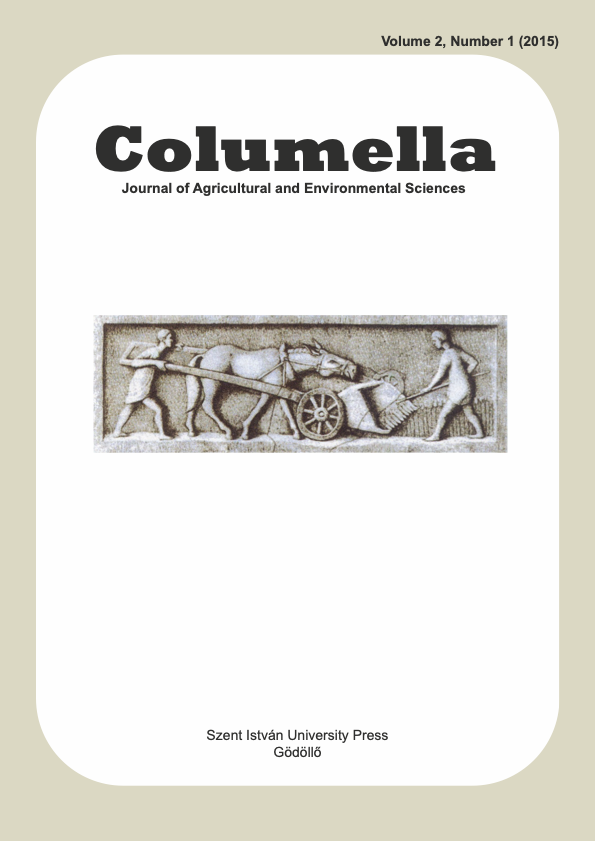Response of maize and wheat to fertdolomite application
DOI:
https://doi.org/10.18380/SZIE.COLUM.2015.1.21.Keywords:
maize, wheat, liming, fertdolomite, yieldAbstract
Granulated dolomite enriched with NPK (trade name fertdolomite: 24.0% CaO + 16.0% MgO + 3.0% N + 2.5% P2O5 + 3.0% K2O) was applied ( 0, 5 t ha-1, 10 t ha-1, 20 t ha-1, 30 t ha-1 and 40 t ha-1) on standard fertilization. The field experiment was established in spring 2008. In the next years only standard fertilization was applied. In this study results of 3-year investigations (2011 -2013) were tested (rotation: maize – wheat – maize). Maize yields on the control were 10.84 and 10.04 t ha-1, for 2011 and 2013, respectively. Maize in the 2011 responded to fertdolomite up to quantity of 10 t ha-1 by significant yield increases up to 9%, while by the rates 30 and 40 t ha-1 yields were decreased up to 14%. However, in the 2013 effective (up to 17% yield increases) were 20 t ha-1 and the higher doses. As affected by application of 20 t ha-1 and the higher doses of fertdolomite four years ago, yields of wheat in 2012 were decreased compared to the control for 7% (7.47 and 6.96 t ha-1, respectively). Possible explanation of this phenomenon could be too high ears densities (871 vs. 982 ears square m-1) under the highest fertdolomite conditions and water deficit in tillering and stem elongation phases of wheat. Thousand grain weight, hectoliter mass and starch contents were independent on fertdolomite. However, protein-, wet gluten contents and sedimentation in wheat grain were considerably increased as affected by fertdolomite application as follows: 13.8% and 15.7% (protein), 33.5% and 38.1% (wet gluten), 46.5 and 58.1% (sedimentation value), for the control and the highest fertolomite rate, respectively.
Downloads
Published
Issue
Section
License
Copyright (c) 2015 Vlado Kovacevic

This work is licensed under a Creative Commons Attribution-NonCommercial-NoDerivatives 4.0 International License.






